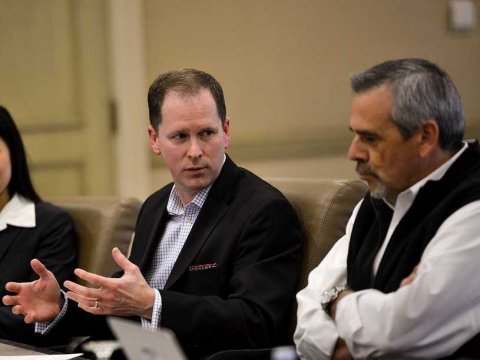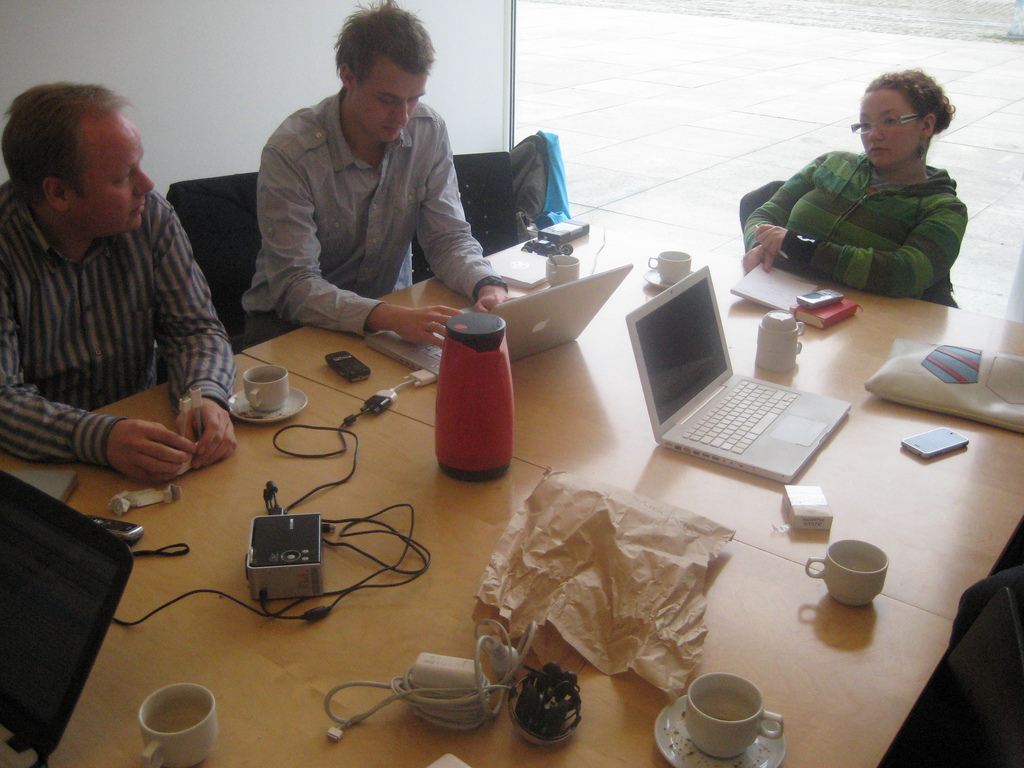Your #Career: 6 Steps to be Viewed as more Powerful at Work… Striking a Confident Pose might be enough Significantly Impact how Powerful you’re Perceive at Work, but these Steps Can Get you There
If there were any logic to our language, power could be a dirty word. Stanford professor Jeffrey Pfeffer posits that the idea of power goes against most people’s idea that the world is a just and fair place. “It violates their basic belief that people can get ahead just on the basis of their hard work and good effort,” he says. Even if the vast majority of people prefer not to acknowledge the presence of power in the workplace, Pfeffer says it’s as unavoidable as air or water in a recent segment he filmed for Insights by Stanford Business.

Photo: Flickr user Alfonso Jimenez]
Summoning power isn’t as simple as it used to be. The study that suggested striking a confident pose to signal a significant hormonal shift that had a positive effect on negotiation and closing a deal was recently cast in doubt. A study from the University of Zurich that tried to duplicate the previous results on a much bigger scale didn’t boost testosterone and reduce cortisol, which would enhance power.
Fear not. Pfeffer offers five other strategies for pumping up your power quotient at work, even if you’re slouching in your chair.
1. FIND THE MOST SIGNIFICANT PLAYER
This is a person you could easily overlook. According to Pfeffer, “Oftentimes, it’s an assistant or a secretary or people who aren’t necessarily that high up in the organization chart.” In order to make yourself more powerful, you need to know who these people are and what they do.
Gatekeepers and caretakers may be ordering gifts and booking travel for executives, but they’re also privy to high-level intelligence and scheduling meetings, the kind of influence that affects those at the top of the org chart. As one executive assistant atNBC Universal says, “People know I know everything.”
Like this Article ?? Share it ! First Sun Consulting, LLC- Outplacement/Executive Coaching Services, is Proud to sponsor/provide our ‘FSC Career Blog’ Article Below. Over 600 current articles like these are on our website in our FSC Career Blog (https://www.firstsun.com/fsc-career-blog/) with the most updated/current articles on the web for new management trends, employment updates along with career branding techniques .
You now can easily enjoy/follow Today our Award Winning Articles/Blogs with over 120K participates Worldwide in our various Social Media formats below:
FSC LinkedIn Network: Over 6K+ Members & Growing ! (76% Executive Level of VP & up), Voted #1 Most Viewed Articles/Blogs, Members/Participants Worldwide (Members in Every Continent Worldwide) : Simply Connect @ www.linkedin.com/in/frankfsc/en , Click the Connect button, Cut/Paste our E-Mail firstsun1991@gmail.com, Click Send Invitation. That Simple.
- Facebook: FSC LinkedIn Network,Connect/Friend us @ http://www.facebook.com/pages/First-Sun-Consulting-LLC-Outplacement-Services/213542315355343?sk=wall
- Google+: FSC LinkedIn Network, Over116K Viewed ! : Connect @ https://plus.google.com/115673713231115398101/posts?hl=en
- Twitter: Follow us @ firstsunllc
educate/collaborate/network
Look forward to your Participation !
2. MAKE A STRONG CONNECTION
With a power map in hand, it’s time to cozy up to the right players who can support your career goals. In addition to cultivating relationships with mentors and advocates, the person with their finger on the pulse of the organization is in a position to help you if you help them.
One way to do this is to build a relationship with them. Next to power, there’s nothing like uttering the wordnetworking to make a working stiff’s skin crawl. But Pfeffer maintains that strengthening a social connection with a power player is necessary to ramp up your own potential power.
3. BE A HELPER
Building relationships takes time. In the workplace, as at networking events, success doesn’t come from a one-and-done approach. The best way to negotiate is to make yourself available to help. Pfeffer recommends taking care of tasks that make those individuals’ lives easier.
Or, you could just do what the best networkers do and facilitate an introduction that could help your influencer. It also doesn’t hurt to get beyond the work environment and talk about personal interests.
4. FLATTERY WILL GET YOU EVERYWHERE
Most people have trouble networking because it feels self-promotional and inauthentic, even when they are employing the best tactics. So it’s likely that Pfeffer’s advice to flatter the person you’ve identified will seem counterintuitive, or downright wrong. But it can be quite effective, he says: “People like to think good about themselves, and we all love people who make us think well of ourselves.”
Just don’t confuse compliments with full-on brownnose behavior. “When someone is overly complimentary and positive, people find them to be disingenuous,” MIT professor Neal Hartman says. “It’s not flattering, and in some cases, it’s annoying.” And it could get you passed over for the promotion you are angling for.
5. PUT YOURSELF IN THE MIDDLE
If you simply can’t bring yourself to sprinkle your conversations with compliments, Pfeffer says there is another way to put yourself in the power seat. Figure out if there are any unexploited resources or a budget to put on a speaker series, a dinner, or even a lunch that will allow you to meet more people. The goal, says Pfeffer, is “to put yourself at the center of a series of relationships.”
Pfeffer believes work and life are all about social relationships: “The better they are, the better your career is going to go.” He encourages those seeking power to ask themselves not only who they need to know, but how they might reallocate their time to spend more of it with people who will be useful to their advancement and less with those who make us feel comfortable.
The reason is simple, he says: “People who you don’t know very well can link you in to different ideas and different social relationships, jobs, and networks.” It’s difficult, he admits, but the initial pain is usually overcome quickly, and most people find they like it, says Pfeffer.
STAY CONFIDENT
Above all, power and leadership go hand in hand, so stay confident. Pfeffer says, “Your job as a leader is not to be genuine or authentic; it is to be true to what the situation requires of you. The last thing you want to do is to signal to others that you don’t have confidence in your own success.”
Fastcompany.com | April 30, 2015 | LYDIA DISHMAN










